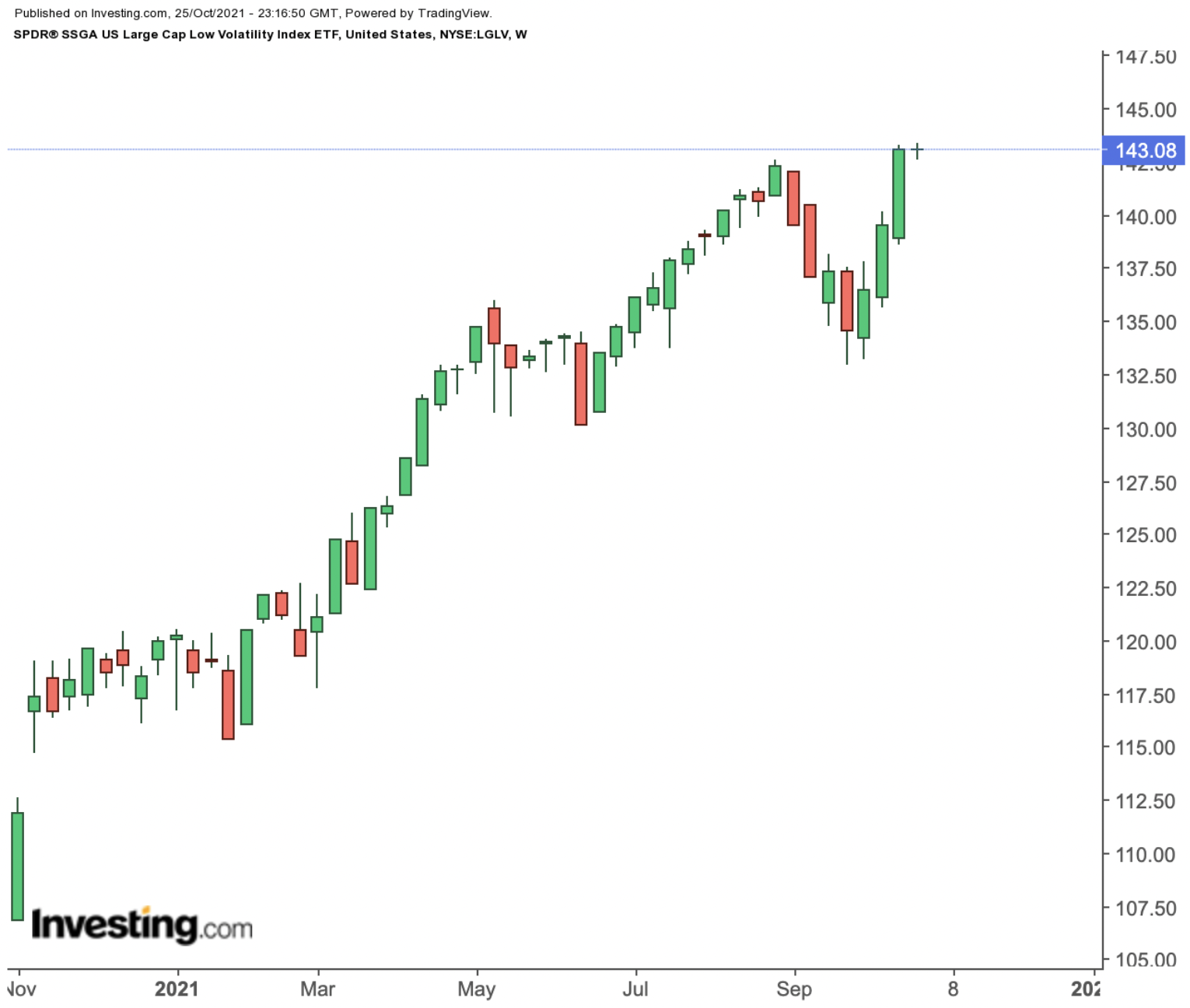Late October is usually a busy time. It's earnings season, and that typically means increased volatility for equities.
In the coming days, investors will see quarterly reports from a variety of big Wall Street names, including, Alphabet (NASDAQ:GOOG) (NASDAQ:GOOGL), Amazon (NASDAQ:AMZN), Apple (NASDAQ:AAPL), Boeing (NYSE:BA), eBay (NASDAQ:EBAY), General Electric (NYSE:GE), McDonald’s (NYSE:MCD), Microsoft (NASDAQ:MSFT), Texas Instruments (NASDAQ:TXN), and Twitter (NYSE:TWTR).
At the same time, traders are watching the CBOE Volatility Index, the benchmark for U.S. stock market volatility. The VIX is based on the S&P 500 Index, and shows traders’ expectation of the 30-day, forward-looking volatility, implied by the prices of S&P options.
The VIX is currently shy of 15.8. A month ago, it was well over 25. By comparison, in March 2020, in the early days of the pandemic, the VIX had surged to over 85.
Investors regard the index as a useful gauge of market sentiment, as the VIX spikes when the S&P 500 drops sharply. Foretelling what might be next for equities as well as for the CBOE Volatility Index is not always possible though.
However, readers who believe we might see increased choppiness in equity prices could research a number of low-volatility exchange-traded funds (ETFs). Today, we introduce two of these funds that could continue to see capital flows in the coming quarters.
1. SPDR SSGA US Large Cap Low Volatility Index ETF
- Current Price: $143.08
- 52-Week Range: $104.50 – $143.28
- Dividend Yield: 1.98%
- Expense Ratio: 0.12% per year
The SPDR® SSGA US Large Cap Low Volatility Index ETF (NYSE:LGLV) invests in U.S. equities that exhibit low volatility. The fund began trading in February 2013.

LGLV, which has 138 holdings, tracks the SSGA US Large Cap Low Volatility Index. The top 10 names make up about 15% of net assets, which stand at $449.4 million. Put another way, this is not a top-heavy fund, and wild price swings of individual stocks are limited. In terms of sub-sectors, we see industrials (17.36%) followed by financials (16.52%), information technology (13.89%) and real estate (12.15%).
Leading holdings include real estate investment trusts American Tower (NYSE:AMT), Public Storage (NYSE:PSA), Crown Castle International (NYSE:CCI), Prologis (NYSE:PLD), providers of environmental services Republic Services (NYSE:RSG), Waste Management (NYSE:WM), and electric utility group Dominion Energy (NYSE:D).
The fund returned 27.8% in the past 12 months and 19.2% in 2021. LGLV also hit a record high in recent days. P/E and P/B ratios are 25.95x and 4.05x. Interested readers might want to wait for a pullback toward $140.
2. Invesco S&P MidCap Low Volatility ETF
- Current Price: $55.58
- 52-Week Range: $41.19 – $55.82
- Dividend Yield: 1.05%
- Expense Ratio: 0.25% per year
The Invesco S&P MidCap Low Volatility ETF (NYSE:XMLV) invests in 81 mid-cap securities from the S&P MidCap 400 Index with the lowest realized volatility over the past 12 months. The index and the fund are rebalanced quarterly.

XMLV, which was first listed in February 2013, has net assets around $1.42 billion. The leading 10 stocks comprise around 15% of the fund. Industrials have the largest weighting, with 21.62%. Next in line are real estate (18.92%), utilities (13.89%), and materials (11.70%).
Among the top names are the producer of packaged bakery products Flowers Foods (NYSE:FLO), First Industrial Realty Trust (NYSE:FR), financial data platform FactSet Research Systems (NYSE:FDS), IT group CACI International (NYSE:CACI), which focuses on providing government intelligence and defense services, and specialty chemicals group RPM International (NYSE:RPM), known for its coatings and sealants.
XMLV is up 26.8% in the past year and 15.5% year-to-date. It hit an all-time high in early September. P/E and P/B ratios stand at 21.74x and 2.78x. Long-term investors could regard a potential decline toward the $53 level as a better entry point.
